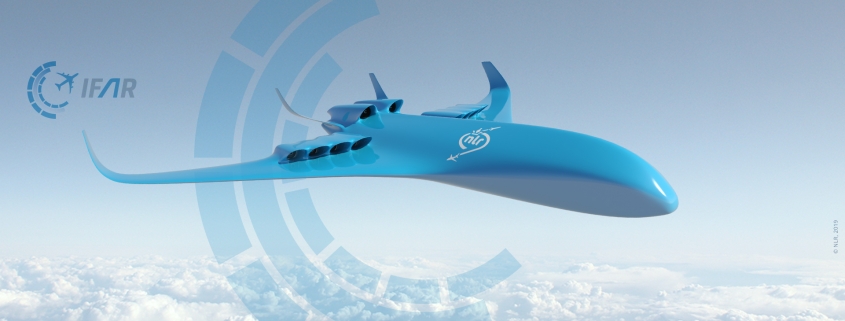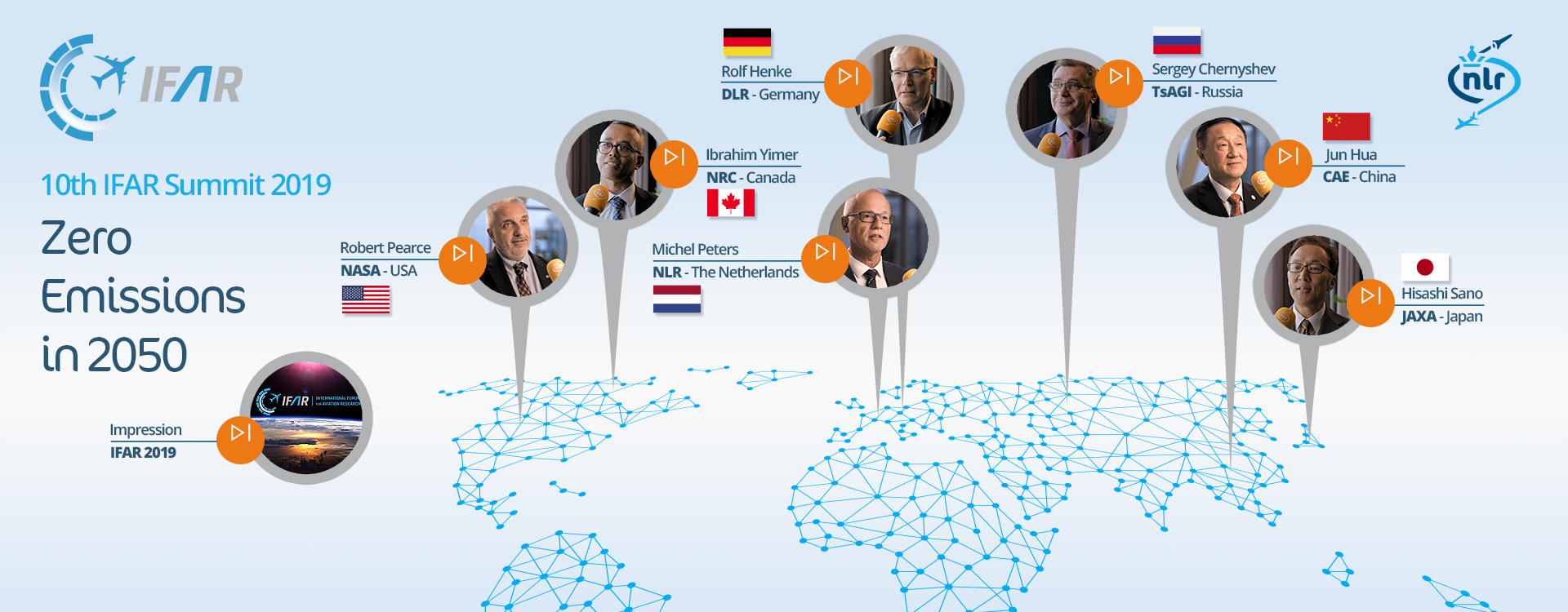Research institutes from throughout the world visited Royal NLR in September to discuss the theme of ‘Zero-Emission Aviation by 2050’. This was the tenth time they had met. The anniversary offered a familiar setting for an intensive meeting at which shared objectives and ambitions were discussed openly.
Flying is still popular. According to ICAO, commercial aviation carried over four billion passengers worldwide in 2018. That is 6.1% growth with respect to the previous year. Emissions from aircraft that play a role in climate change are therefore a serious challenge that demands radical innovation.
Emission-free aviation
The International Forum for Aviation Research (IFAR) met for the tenth time this year, in the Netherlands. On invitation from the Royal Netherlands Aerospace Centre (NLR), 48 representatives from 17 member organizations came to Amsterdam from Monday 23 to Thursday 26 September to discuss their joint goal of achieving zero-emission aviation by no later than 2050.
Past, present and future were all discussed at the four-day summit; results achieved and experiences were shared by the IFAR members. Current projects and challenges for the future were also addressed. Naturally enough, this also meant that cooperative projects were covered – no matter whether you are talking about energy carriers, noise or other emissions, the challenges for the research institutes are cross-border in nature.
Round-table sessions
On the third day of the IFAR conference, the IFAR members plus guests from the industry and policymakers attended two round-table sessions. The founder of IFAR, Prof. Joachim Szodruch, set the ball rolling with an explanation of the overall approach of the various research institutes to making the transition in civilian aviation. The panellists then discussed their visions of the future in the context of the main theme, ‘Zero-Emission Aviation by 2050’.
The following people attended the first round-table discussion about R&D developments:
- Robert Pearce, Acting Associate Administrator at NASA
- Sergey Chernyshev, Chief Scientific Officer at TsAGI
- Maartje van der Helm, Head of Strategy & Capacity Management at LVNL
- Ron van Manen, Head of Unit – Programmes & Operations at Clean Sky 2 Joint Undertaking
- Bart de Vries, Co-Chair of ACARE, the Advisory Council for Aviation Research in Europe
This yielded an interesting discussion showing one requirement that Mr Pearce stated clearly: cooperation. Everyone around the table agreed, despite the tough challenges involved in aviation switching from its current familiar terrain to a new and unknown phase, as Ms van der Helm put it. Mr Chernyshev concurred and also stated his wish to make supersonic flight available once again to the general public. According to Mr van Manen, this was not yet something the industry should be getting involved in, but Mr Pearce emphasized that NASA was aiming for the same thing and that their programme was also making it possible to develop alternative fuels.
The second round-table discussion was about regional differences and it was held with a different panel:
- Hua Jun, Chief Scientist at CAE
- Aad Veenman, Chairman of the Advisory Council of NLR
- Richard Emmerink, Corporate Development Director at Royal Schiphol Group
- Michel Peters, General Manager of NLR and IFAR chair from 2014-2019
CAE recently published a white paper entitled ‘Development of Electric Aircraft’. In the western world, these types of initiatives are supported by the public debate about matters such as ‘flight shaming’. Mr Veenman stressed that common ground with society as a whole therefore needs to be sought. “Don’t forget the public’s voice,” he said. According to Mr Hua, it is less of a debate in China. The growing numbers of flights and passengers are the key reason for CAE’s goal of electrically-powered flight.
When the discussion progressed to collaboration, Mr Hua said that IFAR is an ideal platform for this, helping to look across the borders. Mr Peters stated that he would also like to look beyond the boundaries of the aviation sector. “The Netherlands has to raise the tempo. Progress towards zero-emission aviation is too slow.” As an example, he gave the challenge of finding the right energy carrier for planes. Parties outside the aviation sector will also have a key role in the search for suitable solutions.
IFAR 2020
A new IFAR Leadership Team was appointed during the conference in Amsterdam: TsAGI is from now on the chair and NRC is the vice-chair. Given that new make-up, NRC is inviting the international community from the 26 countries to come to Canada next year. The 11th IFAR summit will be held in Ottawa from 2 to 5 November 2020.
Would you like to know more about the vision regarding the future of aviation according to the different research institutes? Please watch the interviews by selecting the orange icons below.
Impression
IFAR 2019
Robert Pearce
NASA – USA
Ibrahim Yimer
NRC – Canada
Michel Peters
NLR – The Netherlands
Rolf Henke
TsAGI – Russia
Sergey Chernyshev
TsAGI – Russia
Jun Hua
CAE – China
Hisashi Sano
JAXA – Japan
 NLR
NLR

